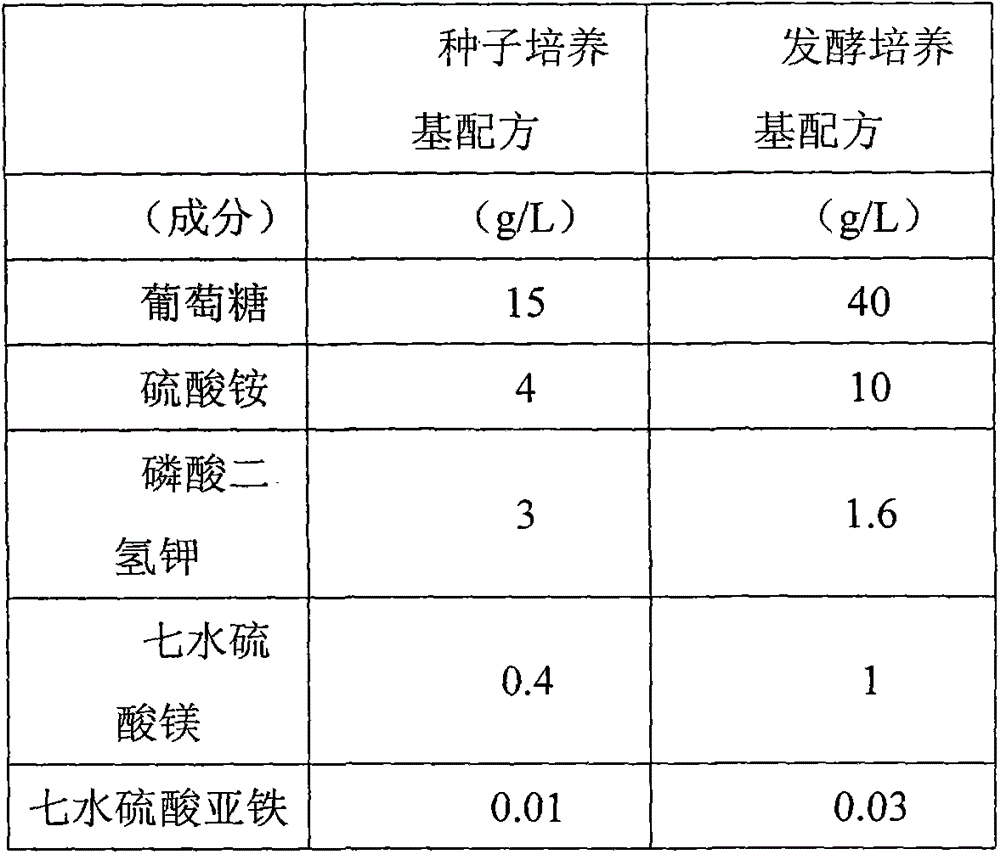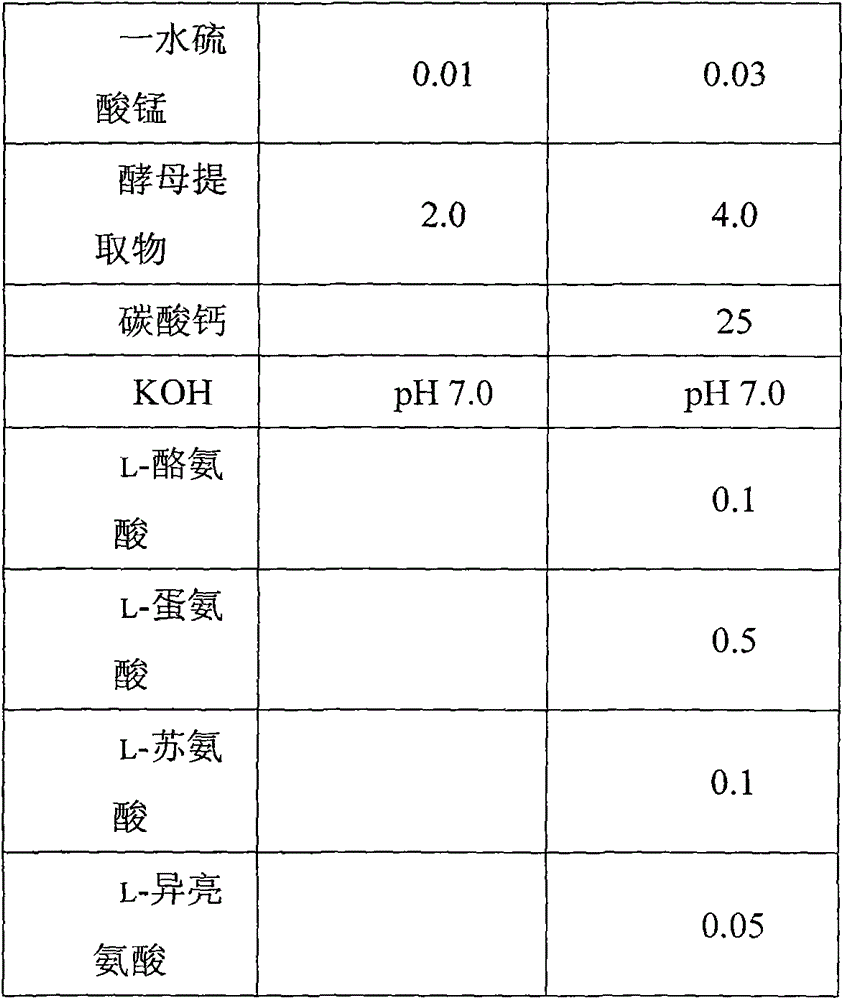Method for fermenting production of L-lysine through using aconitase expression weakened and/or enzymatic activity reduced bacteria
An aconitase and bacterial fermentation technology, applied in the field of amino acid fermentation, can solve the problems of long metabolic distance, difficulty in bacterial growth, and the inability to simply increase or knock out the acnA gene, so as to achieve the effect of increasing production and facilitating popularization and application
- Summary
- Abstract
- Description
- Claims
- Application Information
AI Technical Summary
Problems solved by technology
Method used
Image
Examples
Embodiment 1
[0032] Construction Example 1 replaces the start codon ATG of acnA with GTG
[0033] Using the extracted wild-type Escherichia coli K12W3110 strain (available from NITE Biological Resource Center (NBRC)) genome chromosome as a template, and primers P1 and P2, P3 and P4 respectively PCR amplification obtained two DNA fragments (respectively named Up1 and Down1 fragments) with lengths of 510 bp and 620 bp respectively. Wherein, PCR is carried out as follows: denaturation at 94°C for 30s (seconds), annealing at 52°C for 30s (seconds), and extension at 72°C for 30s (seconds) (30 cycles). Wherein, the primer sequence is as follows:
[0034] P1: 5'-CGC GGATCC GGAGTCGTCACCATTATGCC-3' (the underline indicates the restriction site of BamHI)
[0035] P2: 5'-TCTCGTAGGGTTGACGACA C AGCTCCTCCTTAATGACAGG-3' (underline indicates point mutation)
[0036] P3: 5'-CCTGTCATTAAGGAGGAGCT G TGTCGTCAACCCTACGAGA-3' (underline indicates point mutation)
[0037] P4: 5'-ATT GCGGCCGC CCATTCACCGTCC...
Embodiment 2
[0041] Construction Example 2 acnA gene sequence mutation reduces aconitase activity
[0042] The 90 bp base before the stop codon was deleted to reduce the activity of aconitase. Specifically, using the extracted genome chromosome of wild-type Escherichia coli K12W3110 as a template, PCR amplification was performed with primers P5 and P6, P7 and P8 respectively, and two DNA fragments (Up3 and Down3 fragment). Wherein, PCR is carried out as follows: denaturation at 94°C for 30s (seconds), annealing at 52°C for 30s (seconds), and extension at 72°C for 30s (seconds) (30 cycles). Wherein, the primer sequence is as follows:
[0043] P5: 5'-CGC GGATCC CGTCACACGATCCGATACCT-3' (the underline indicates the restriction site of BamHI)
[0044] P6: 5'-CGGCAAGCAAATAGTTGTTATACGACTTCCTGGCTACCAT-3' (underline indicates point mutation)
[0045] P7: 5'-ATGGTAGCCAGGAAGTCGTATAACAACTATTTGCTTGCCG-3' (underline indicates point mutation)
[0046] P8: 5'-ATT GCGGCCGC CATGGGGCGATTTCCTGATG-3' (...
PUM
 Login to View More
Login to View More Abstract
Description
Claims
Application Information
 Login to View More
Login to View More - R&D
- Intellectual Property
- Life Sciences
- Materials
- Tech Scout
- Unparalleled Data Quality
- Higher Quality Content
- 60% Fewer Hallucinations
Browse by: Latest US Patents, China's latest patents, Technical Efficacy Thesaurus, Application Domain, Technology Topic, Popular Technical Reports.
© 2025 PatSnap. All rights reserved.Legal|Privacy policy|Modern Slavery Act Transparency Statement|Sitemap|About US| Contact US: help@patsnap.com



